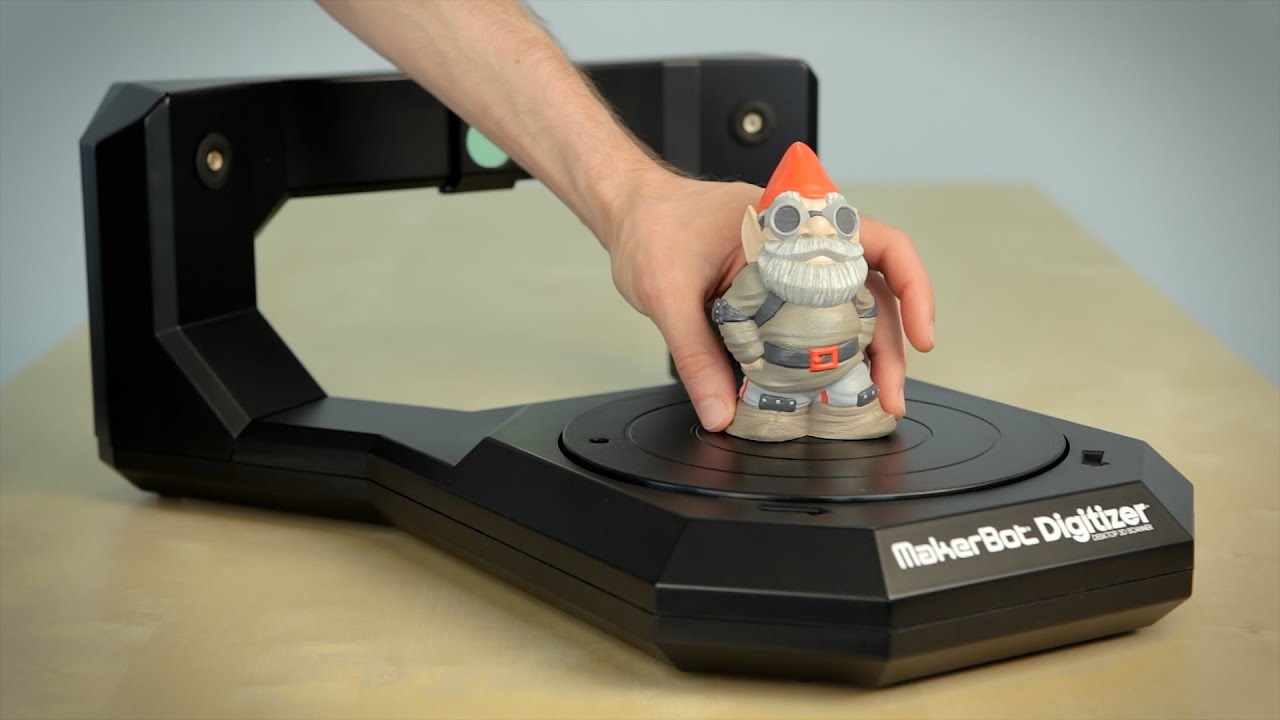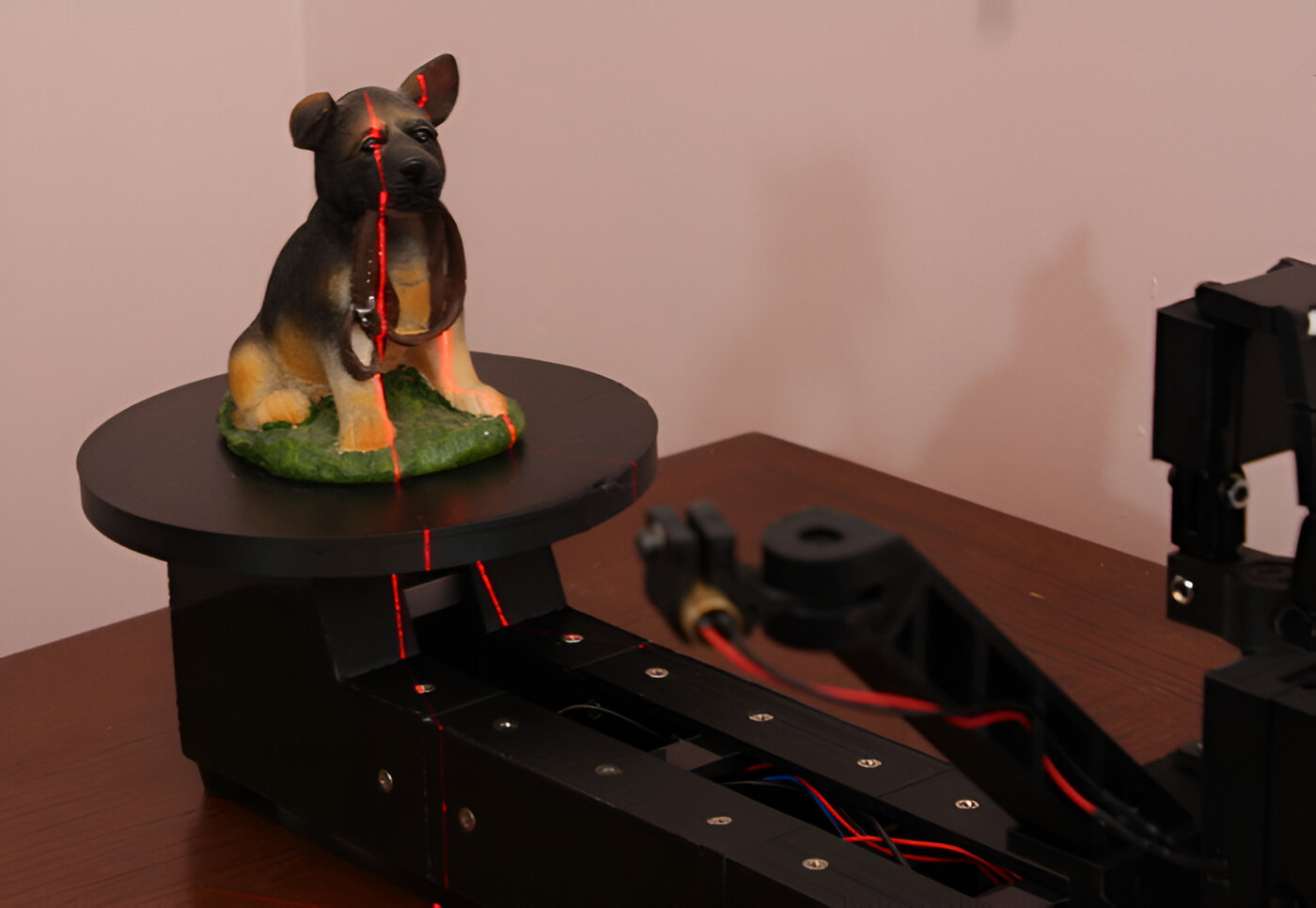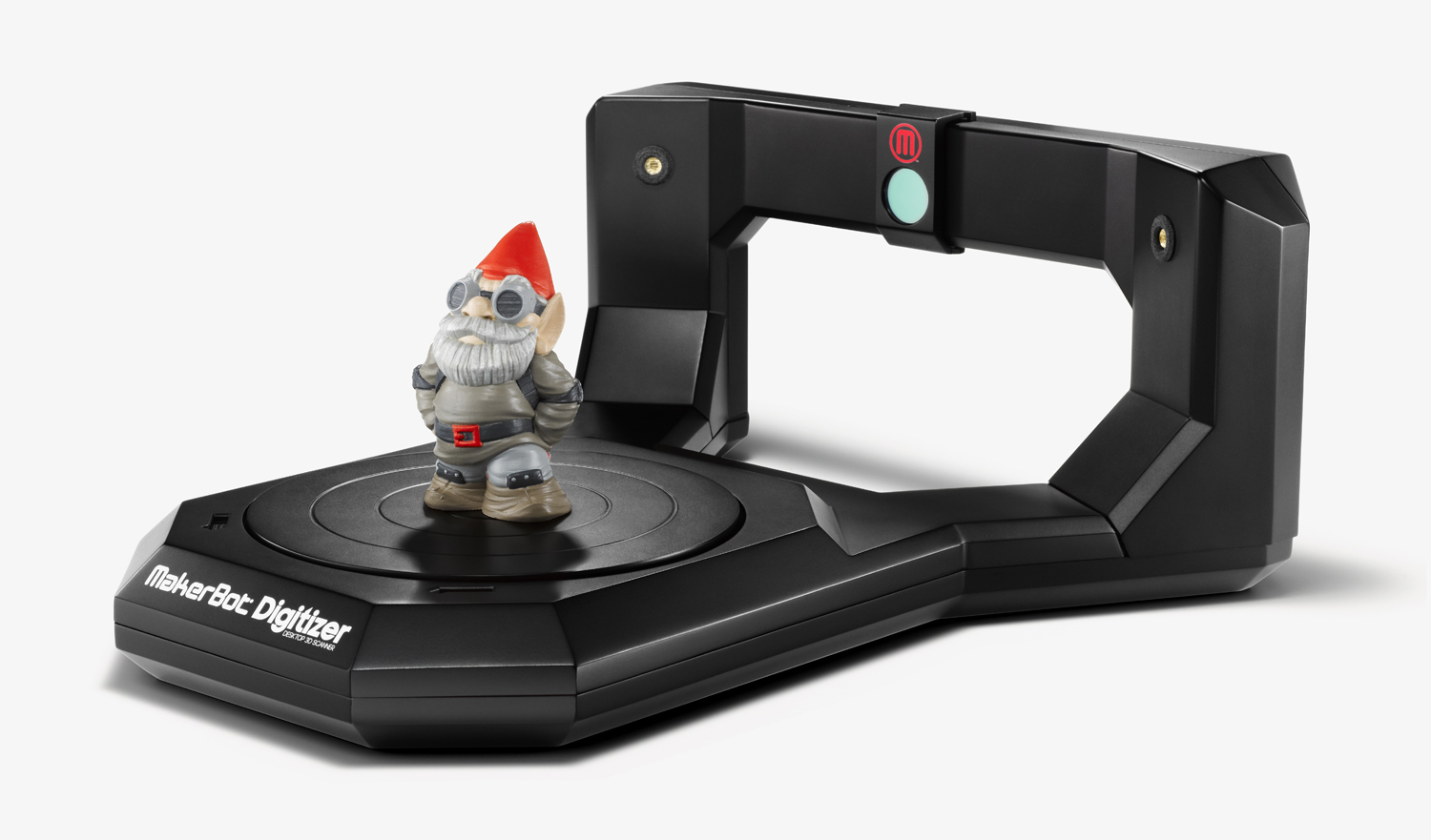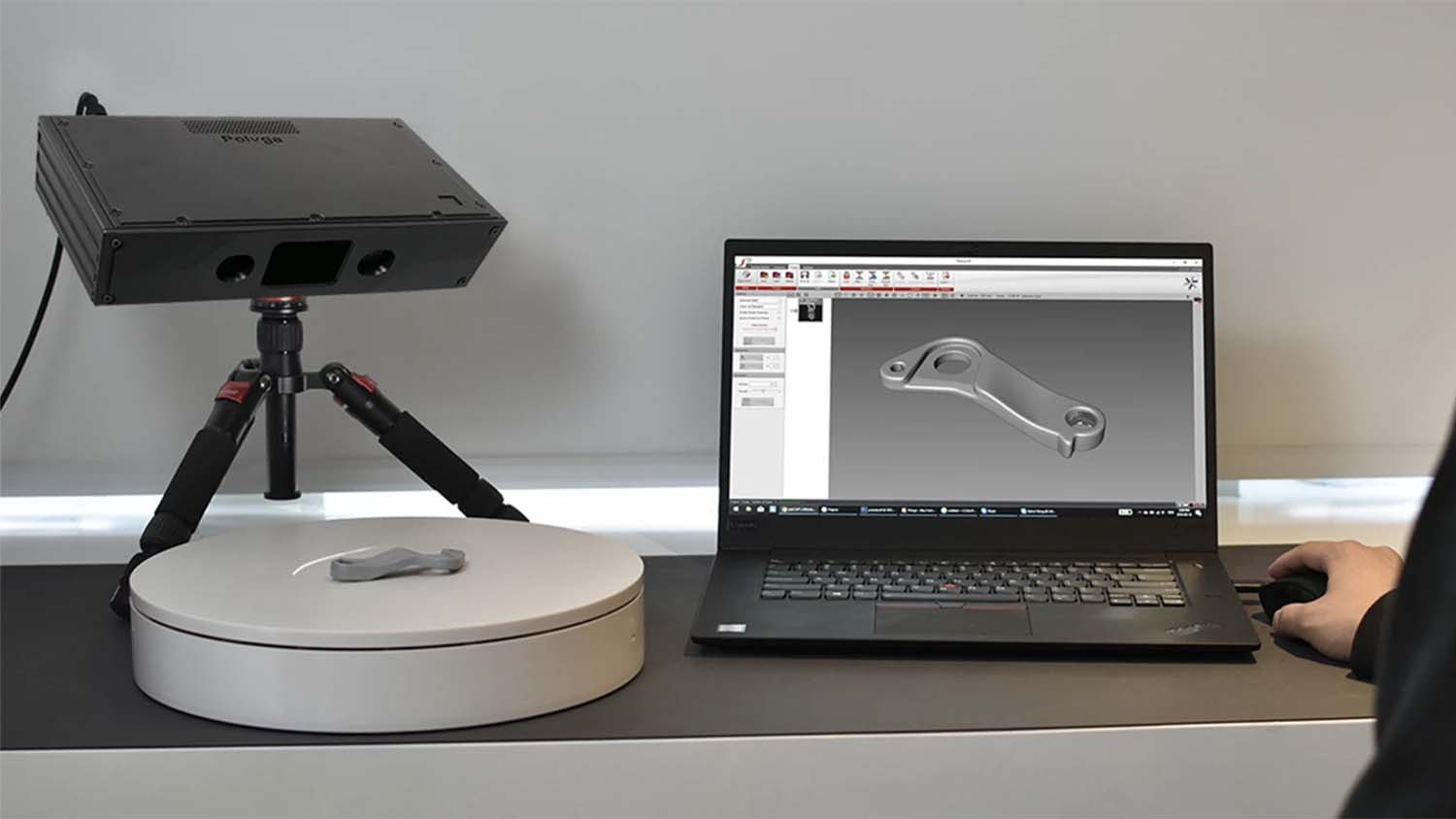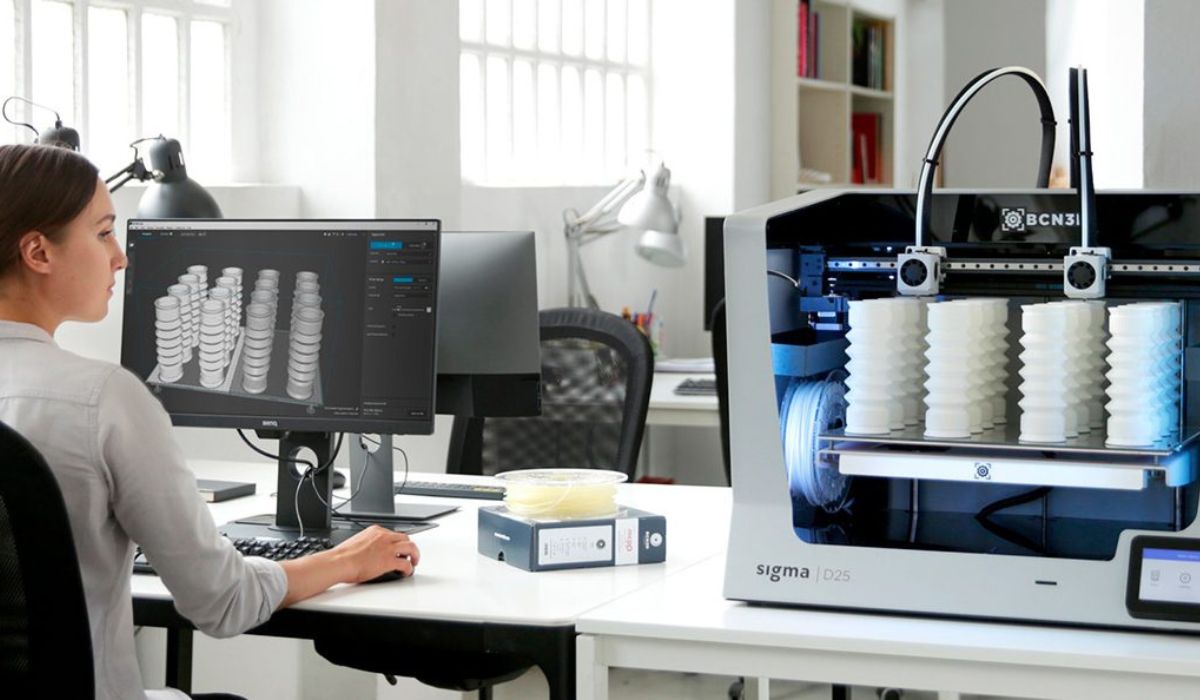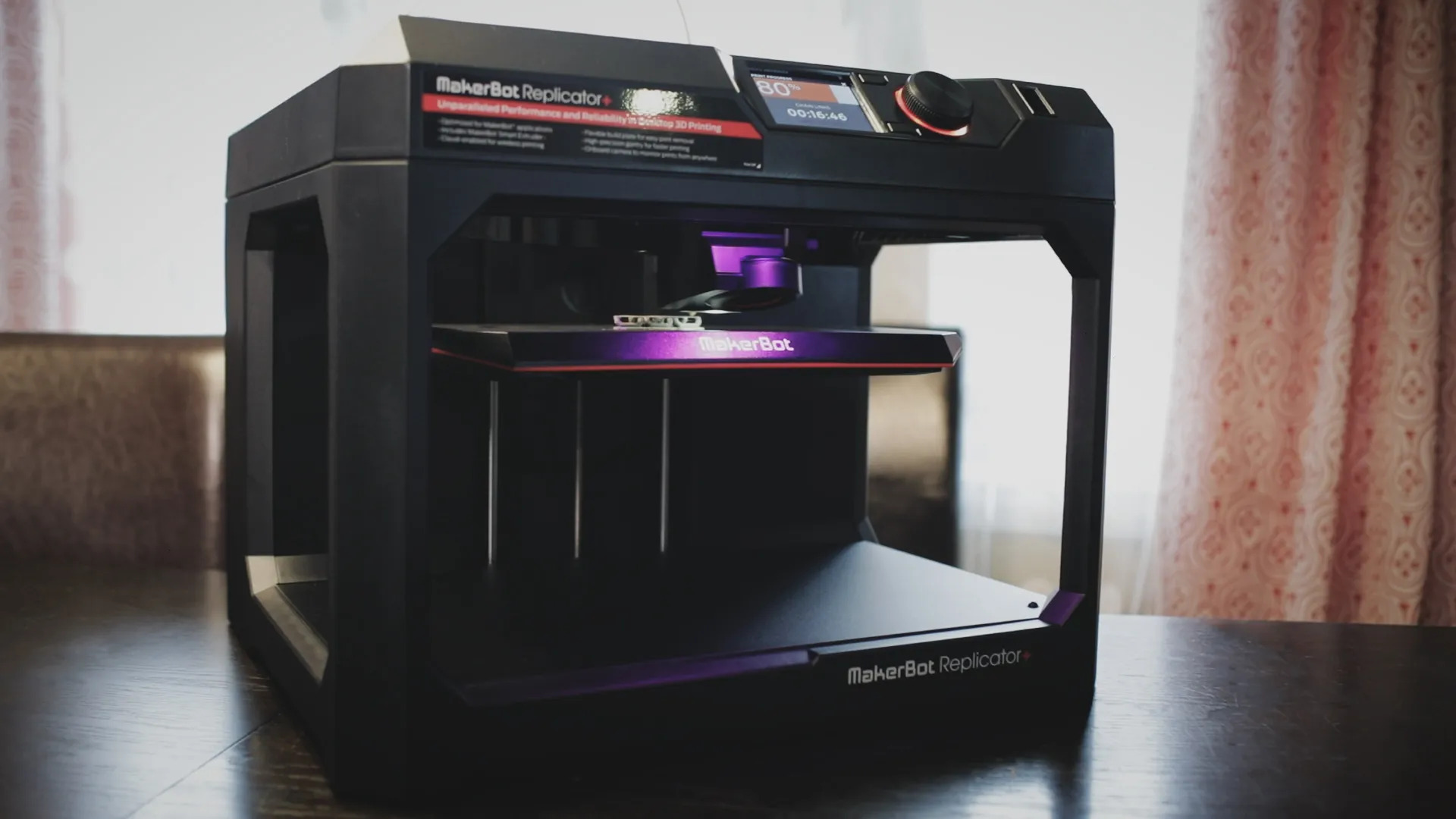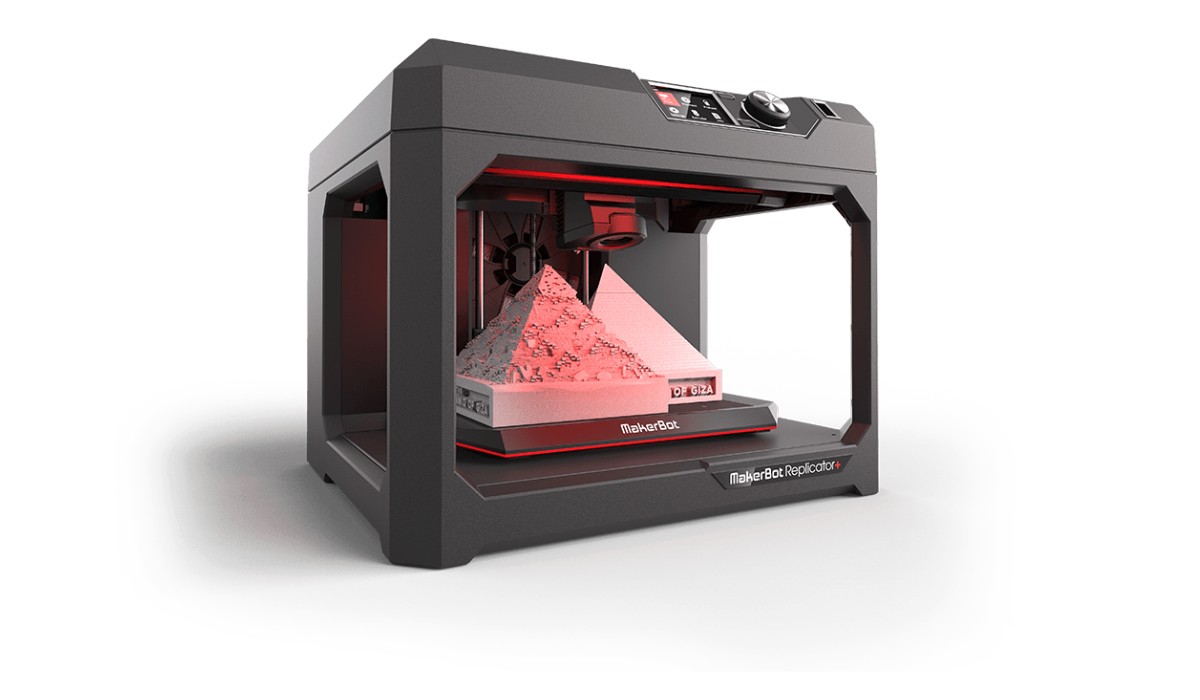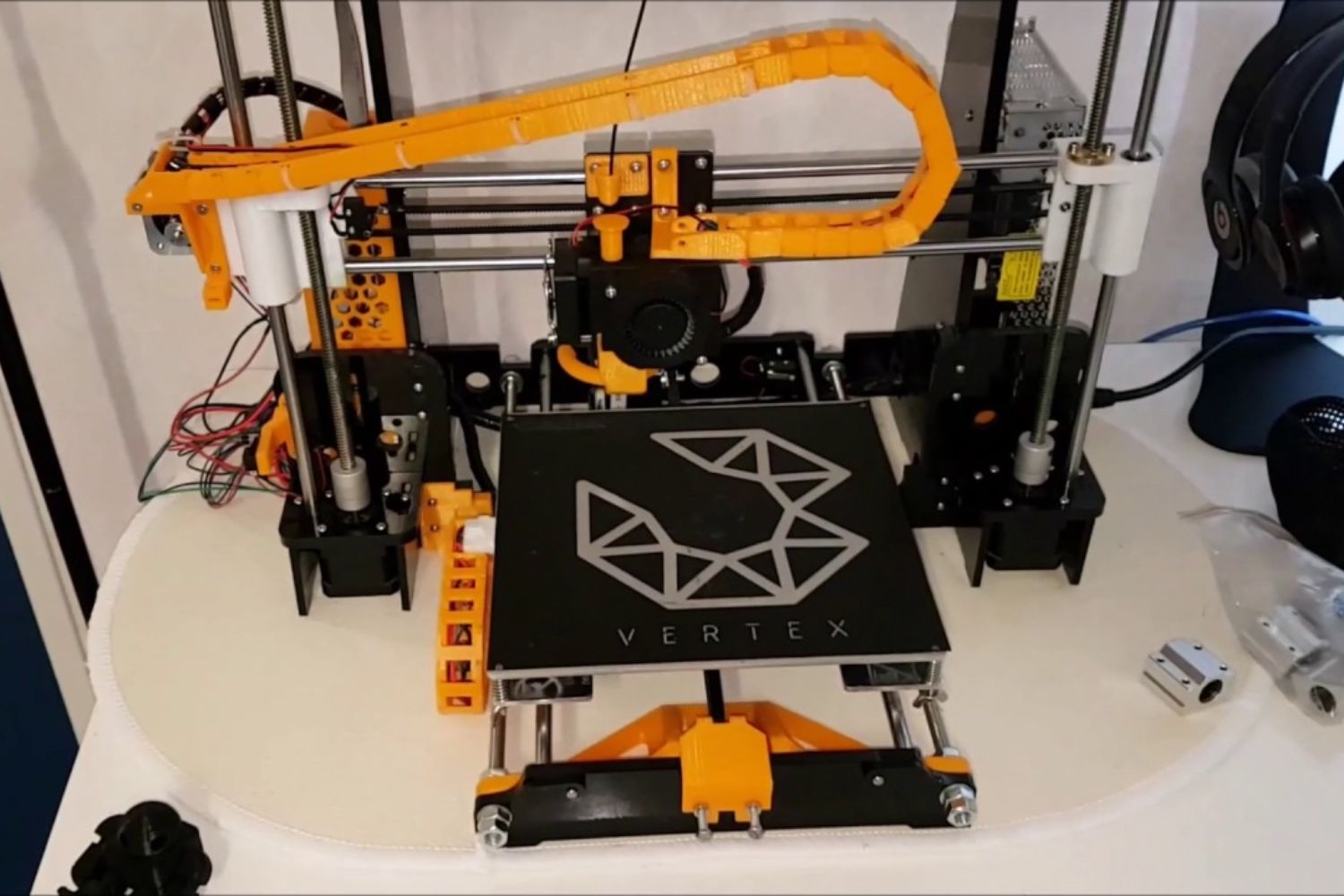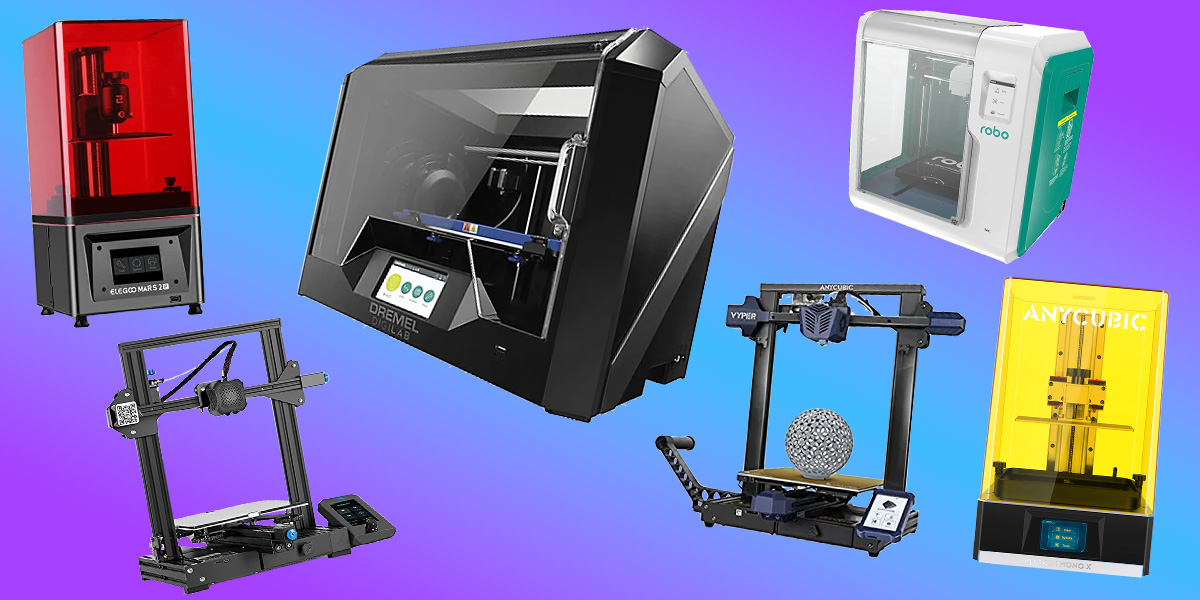Introduction
Welcome to the exciting world of 3D scanning! In today’s rapidly advancing technology landscape, 3D scanning has emerged as a powerful tool that enables us to capture real-world objects and convert them into digital models. These models can then be manipulated, analyzed, and even replicated using 3D printing technology. Among the many 3D scanning options available, one device that stands out is the Makerbot 3D Scanner.
The Makerbot 3D Scanner is a cutting-edge device that utilizes structured light technology to capture highly detailed and accurate 3D scans of objects. This compact and user-friendly scanner offers a range of features that make it an ideal choice for both professionals and enthusiasts.
In this article, we will explore the various aspects of the Makerbot 3D Scanner, its benefits, limitations, and its comparison with other 3D scanners in the market. We will also delve into real-life applications where this scanner has proven to be invaluable.
Whether you are a designer, engineer, artist, or simply someone intrigued by the possibilities of 3D scanning, this article will provide you with a comprehensive understanding of the Makerbot 3D Scanner and its capabilities.
Overview of the Makerbot 3D Scanner
The Makerbot 3D Scanner is a cutting-edge device designed to bring the power of 3D scanning to the hands of users. It is compact, lightweight, and easy to use, making it suitable for a wide range of applications. The scanner utilizes structured light technology, where patterns of light are projected onto an object and captured by a camera. This data is then processed to create a detailed 3D model of the object.
Featuring a sleek and minimalist design, the Makerbot 3D Scanner incorporates high-quality components to ensure precise and accurate scans. It is equipped with a high-resolution camera that captures intricate details with exceptional clarity. The structured light projector generates patterns that enable the scanner to capture depth information, resulting in a highly detailed and realistic representation of the object being scanned.
The Makerbot 3D Scanner offers a user-friendly experience with its intuitive software interface. It provides step-by-step instructions, allowing users to easily calibrate the scanner and optimize scanning settings. The software also includes powerful editing tools, enabling users to refine and modify the scanned models to meet their specific requirements.
Another notable feature of the Makerbot 3D Scanner is its versatility. It supports both automatic and manual scanning modes, giving users the flexibility to choose the most suitable option for their needs. The automatic mode is ideal for capturing quick scans of small objects, while the manual mode allows for more intricate scanning of larger or more complex objects.
Furthermore, the Makerbot 3D Scanner is compatible with a wide range of operating systems, including Windows, MacOS, and Linux. This ensures that users can seamlessly integrate the scanner into their existing workflow, regardless of the platform they are using.
Overall, the Makerbot 3D Scanner combines advanced technology, ease of use, and versatility to deliver impressive 3D scanning capabilities. Whether you are a professional seeking to enhance your design process or an enthusiast looking to explore the world of 3D scanning, the Makerbot 3D Scanner is an excellent choice.
Benefits of Using the Makerbot 3D Scanner
The Makerbot 3D Scanner offers a plethora of benefits that make it a standout choice for individuals and businesses looking to delve into the world of 3D scanning. Here are some of the key advantages:
- High Precision and Accuracy: The Makerbot 3D Scanner utilizes structured light technology to capture highly detailed and accurate 3D scans. With its high-resolution camera and advanced depth sensing capabilities, it is capable of capturing intricate details with exceptional precision.
- User-Friendly Interface: The scanner’s software interface is designed with usability in mind. It provides step-by-step instructions and intuitive controls, making it easy for users to navigate through the scanning process. Users can quickly calibrate the scanner and adjust settings to achieve optimal results.
- Versatility: The Makerbot 3D Scanner offers both automatic and manual scanning modes, giving users the flexibility to choose the most suitable option for their specific needs. Whether you are scanning small objects or larger, more complex items, the scanner can accommodate your requirements.
- Compatibility: With its compatibility across multiple operating systems, including Windows, MacOS, and Linux, the Makerbot 3D Scanner seamlessly integrates into existing workflows. Users can easily incorporate the scanner into their design and manufacturing processes without worrying about compatibility issues.
- Post-Processing Capabilities: The scanner’s software includes powerful editing tools that allow users to refine and modify the scanned models. Users can clean up the models, remove imperfections, and make necessary adjustments before exporting them for further processing or 3D printing.
- Portability: The Makerbot 3D Scanner’s compact and lightweight design makes it highly portable. Users can easily carry it to different locations, allowing for on-the-go scanning and flexibility in various work environments.
- Affordability: Compared to other professional-grade 3D scanners in the market, the Makerbot 3D Scanner offers an affordable option without compromising on quality. It provides an entry point for individuals or businesses looking to explore the world of 3D scanning without breaking the bank.
Overall, the Makerbot 3D Scanner offers a combination of high precision, user-friendly interface, versatility, and affordability, making it a valuable tool for a wide range of applications. Whether you are in product design, archaeology, art, or engineering, the Makerbot 3D Scanner is a reliable companion that opens up a world of possibilities.
Limitations of the Makerbot 3D Scanner
While the Makerbot 3D Scanner offers numerous benefits, it is important to be aware of its limitations. Here are some of the key considerations:
- Limited Scanning Area: The size of the scanning area of the Makerbot 3D Scanner is relatively compact compared to some other 3D scanners on the market. This means that it may not be suitable for scanning large objects or scenes in their entirety. Users will need to carefully consider the dimensions of the objects they intend to scan.
- Dependence on Lighting Conditions: The performance of the Makerbot 3D Scanner can be affected by external lighting conditions. Inadequate lighting or harsh shadows can result in inaccurate scans or loss of detailed information. Ensuring optimal lighting conditions is crucial for obtaining high-quality scans.
- Limited Scan Resolution: While the Makerbot 3D Scanner captures detailed scans, there can be limitations in terms of scan resolution. It may not be suitable for applications that require extremely high-resolution scans, such as medical or forensic purposes. Users should consider their specific needs and desired level of detail when using the scanner.
- Manual Alignment: In manual scanning mode, users need to align the scanner manually as they move it around the object. This can be time-consuming and may require some practice to achieve consistent and accurate results. Users should be prepared to invest time and effort in mastering the scanning technique.
- Difficulties with Reflective Surfaces: Reflective or shiny surfaces can pose challenges for the Makerbot 3D Scanner. The structured light patterns may not be adequately captured on reflective surfaces, leading to incomplete or distorted scans. Users may need to take additional measures, such as applying anti-reflective coatings, to overcome this limitation.
- Processing Time: The processing time required to convert the captured scan data into a usable 3D model can vary depending on the complexity and size of the scanned object. Large or intricate models may take longer to process. Users should be prepared to wait for the software to generate the final output.
It’s important to understand these limitations in order to set realistic expectations and ensure that the Makerbot 3D Scanner is suitable for your specific scanning needs. Despite these limitations, the scanner still offers a great balance of functionality and affordability, making it a viable choice for many applications.
Comparison with Other 3D Scanners
When it comes to 3D scanning, there are several options available in the market. Let’s compare the Makerbot 3D Scanner with some popular alternatives to get a better understanding of its strengths and weaknesses:
- Einscan Pro 2X Plus: The Einscan Pro 2X Plus is a professional-grade 3D scanner that offers exceptional scanning accuracy and resolution. It is capable of capturing detailed textures and can handle larger scanning areas. However, it comes with a higher price tag and may be overkill for casual or entry-level users.
- Shining 3D EinScan-SE: The EinScan-SE is another affordable option in the market. It offers good scanning capabilities for small to medium-sized objects and provides user-friendly software. However, it has limited compatibility with operating systems, and its scanning speed and resolution may not match that of the Makerbot 3D Scanner.
- Artec Eva Lite: The Artec Eva Lite is a lightweight handheld 3D scanner that offers high-quality scans and is suitable for a wide range of applications. It is known for its ease of use and portability. However, it is significantly more expensive than the Makerbot 3D Scanner and may not be justifiable for those on a tight budget.
- Occipital Structure Sensor: The Structure Sensor is a versatile 3D scanner that attaches to an iPad, allowing for mobile scanning on the go. It offers impressive depth sensing capabilities and is popular among app developers. However, it may not provide the level of precision and detail that the Makerbot 3D Scanner offers.
When comparing the Makerbot 3D Scanner with these alternatives, it becomes clear that it strikes a balance between affordability and functionality. While it may not have the same level of precision or scanning area as some professional-grade scanners, it offers a user-friendly interface, versatility, and compatibility across multiple operating systems.
Ultimately, the choice of 3D scanner depends on your specific requirements, budget, and level of expertise. For those starting out in the world of 3D scanning or seeking an affordable option without compromising on quality, the Makerbot 3D Scanner is a solid choice.
Real-Life Applications of the Makerbot 3D Scanner
The Makerbot 3D Scanner has found applications in a wide range of industries and creative fields. Let’s explore some real-life use cases where this scanner has proven to be invaluable:
- Product Design and Prototyping: The Makerbot 3D Scanner is widely used in product design and prototyping processes. By scanning physical objects and converting them into digital models, designers can quickly iterate and refine their designs. This saves time and costs associated with traditional modeling techniques.
- Cultural Heritage Preservation: Museums and archaeological organizations utilize the Makerbot 3D Scanner to preserve and document cultural artifacts. Scanning ancient artifacts allows for detailed digital replicas to be created, ensuring their preservation and accessibility for future generations.
- Digital Content Creation: The scanner is often used in the entertainment industry to create high-quality digital assets for video games, movies, and animations. By scanning real-world objects and environments, artists can create realistic and immersive digital experiences.
- Customization and Personalization: The Makerbot 3D Scanner enables customization and personalization in various industries. For example, in the healthcare sector, orthopedic specialists can use scanned data to create personalized prosthetics and orthotics. In the fashion industry, designers can scan and modify garments to fit individual customers.
- Forensic Investigation: Forensic experts rely on the Makerbot 3D Scanner to accurately capture crime scenes and collect evidence. The detailed scans provide valuable visual and dimensional information, aiding in investigations and courtroom presentations.
- Art and Sculpture: Artists and sculptors utilize the Makerbot 3D Scanner to create digital replicas of their physical artworks. This allows for preservation, replication, and manipulation of their creations, providing new avenues for creative expression.
- Reverse Engineering: The Makerbot 3D Scanner plays a crucial role in reverse engineering applications. By scanning existing parts or products, engineers can analyze their geometry and dimensions, facilitating the reproduction or redesign of complex components.
These are just a few examples of how the Makerbot 3D Scanner is being used in various industries. Its versatility, ease of use, and affordability make it a valuable tool for professionals and enthusiasts alike, empowering them to push the boundaries of creativity and innovation.
Conclusion
The Makerbot 3D Scanner is a powerful tool that brings the world of 3D scanning within reach for individuals and businesses. With its structured light technology, user-friendly interface, versatility, and affordability, it offers a compelling solution for a wide range of applications.
Throughout this article, we have explored the various aspects of the Makerbot 3D Scanner, including its overview, benefits, limitations, comparison with other scanners, and real-life applications. It is evident that the Makerbot 3D Scanner strikes a balance between functionality and affordability, making it an ideal choice for those seeking high-quality scans without breaking the bank.
Whether you are a designer, engineer, artist, or enthusiast, the Makerbot 3D Scanner provides you with the tools to capture real-world objects and transform them into digital models. From product design and cultural heritage preservation to personalized customization and forensic investigation, the possibilities are vast.
As with any technology, it is important to understand the limitations of the scanner to set realistic expectations. Factors such as scanning area, lighting conditions, and reflective surfaces should be considered when using the Makerbot 3D Scanner.
In conclusion, the Makerbot 3D Scanner opens up a world of possibilities for 3D scanning and digital modeling. Its precision, user-friendliness, versatility, and affordability make it a valuable tool in various industries and creative fields. Whether you are a professional or an enthusiast, the Makerbot 3D Scanner empowers you to bring your ideas to life in the digital realm and take part in the exciting world of 3D scanning.







